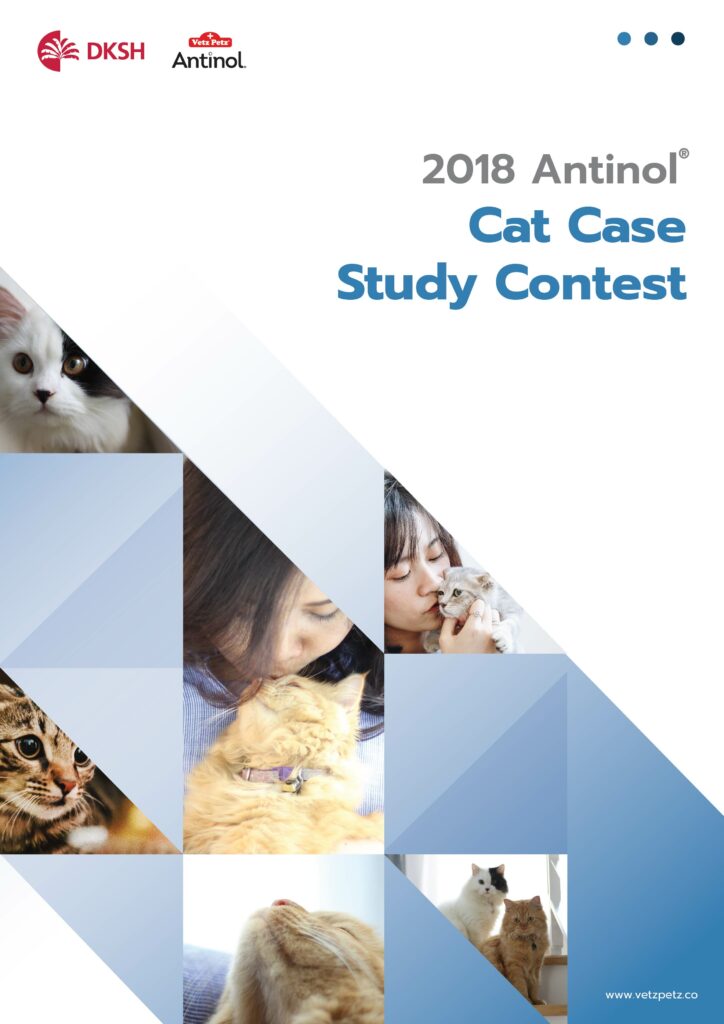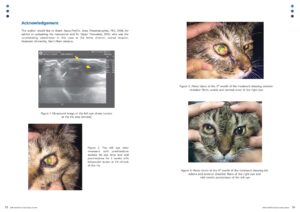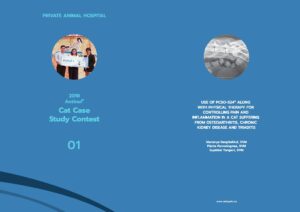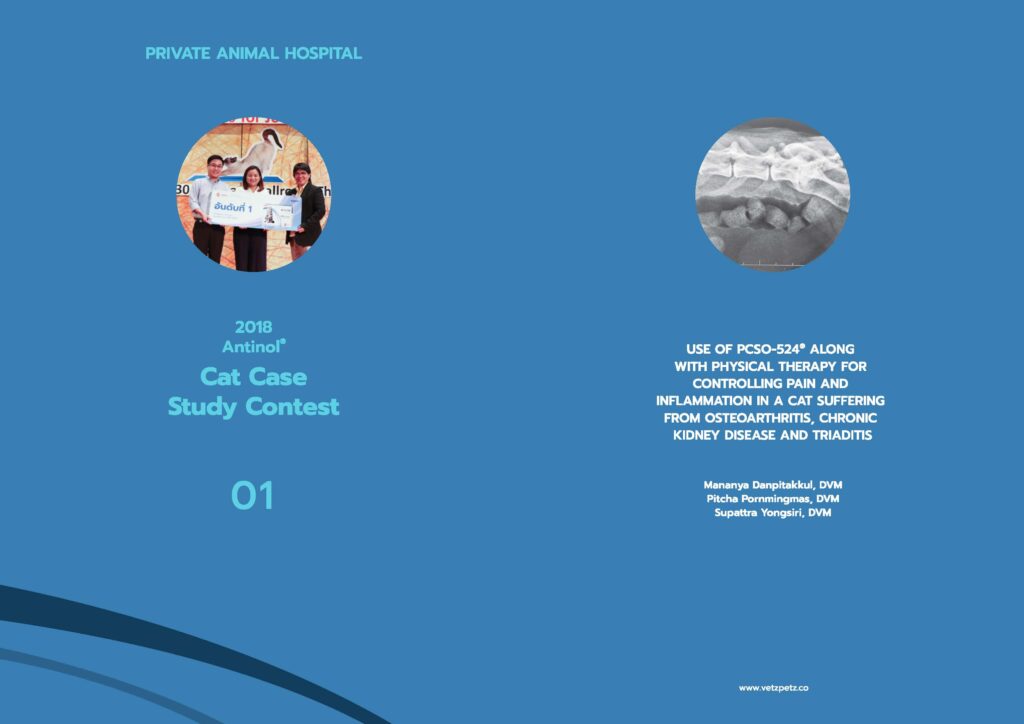Antinol® Latest Studies
Sorted by recent
 Filter Studies by Smart Tags
Filter Studies by Smart Tags
Bone & JointCardiovascularCase Study & ProceedingCatDogEAB 277™EfficacyExotic PetImmunologyNeuro & BehaviorOphthalmologyOralRabbitRenalRespiratoryRodentSafetySkinUTI
Smart Search
Antinol® Case Study Contest 2018

The 6 Case Studies from Antinol® Case Study Contest of 2018.
Antinol® Contest has been organized successfully for 3 years since 2016 in Thailand.
The key objective of this scientific contest is to encourage knowledges sharing amongst the Vet practitioners on how to treat the companion animals inflammatory cases safely & effectively by using Antinol in conjunctive with others medicines especially the NSAIDs (Non Steroidal anti-inflammation drugs) which is the drug of choices of anti-inflammatory problems.




Use of PCSO-524® Along with Physical Therapy for Controlling Pain and Inflammation in a Cat Suffering from Osteoarthritis, Chronic Kidney Disease and Triaditis

A spayed female domestic shorthaired cat aged 21 years and weighed 4.2 kilograms with history of chronic kidney disease and triaditis was referred to Suvarnachad Animal Hospital.
The cat showed signs of both hind limb weakness, limp tail and pain around posterior body part. Other signs included polydipsia, polyuria, and diarrhea. Radiographic examination revealed osteoarthritis at lumbosacral joint, elbow and both stifle joints. Hematological and blood chemistry tests showed mild anemia, neutrophilic leukocytosis, increased serum amyloid A and Increased Feline pancreatic lipase.
Administration of PCSO-524® and physical therapy were provided to reduce systematic and local pain and inflammation. The supportive treatment was continued for 15 months, during the first 2 months of which, the lumbosacral joint painwas reduced and then disappeared after 5 months. The control of elbow and knee joint pain was satisfied for the whole treatment period.
The cat was able to move the tail and resume normal walking after the 1st and 5th month of the treatment, respectively. Ability to jump and climb returned in the 5th and 8th month. However, the cat had improved defecation within 3 months. Testing of feline pancreatic lipase and serum amyloid A showed normal levels after 7 months of the treatment.


Updated Study Topics
New researches and publications related to PCSO-524® and its result in clnical test submitted by veterinarians on the global conferences every year and the data keeps growing with more studies conducted


 Authors:
Authors: